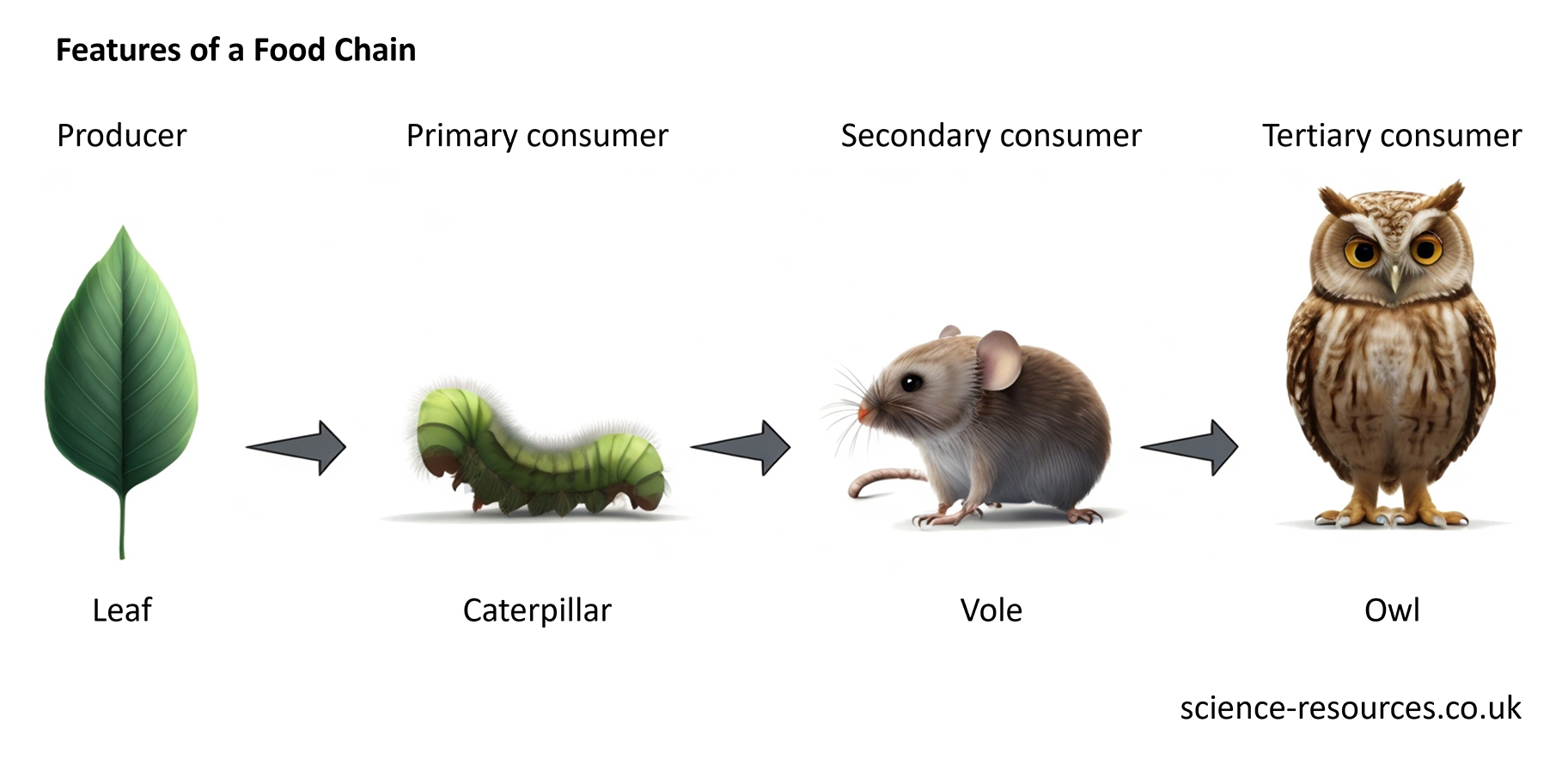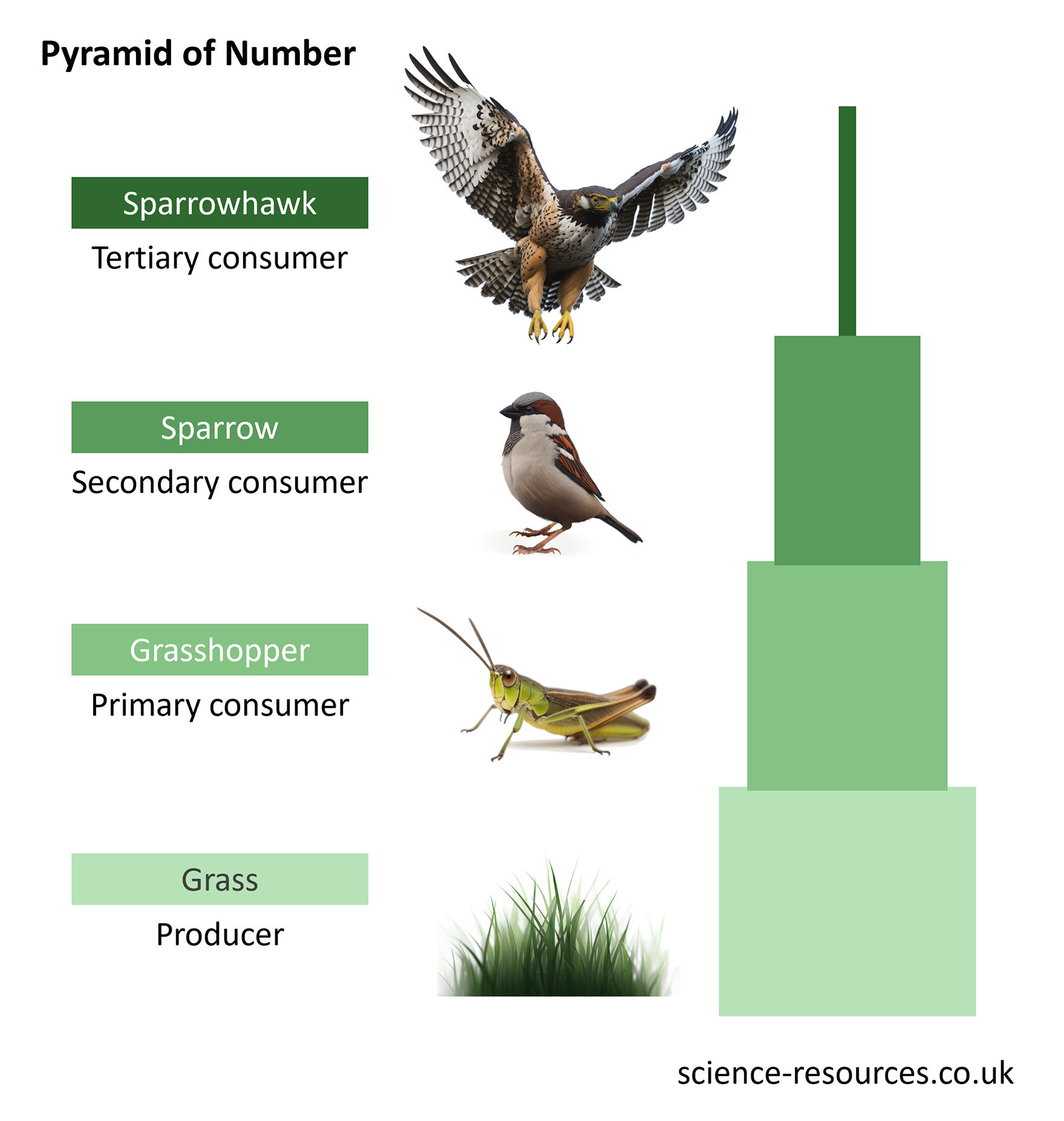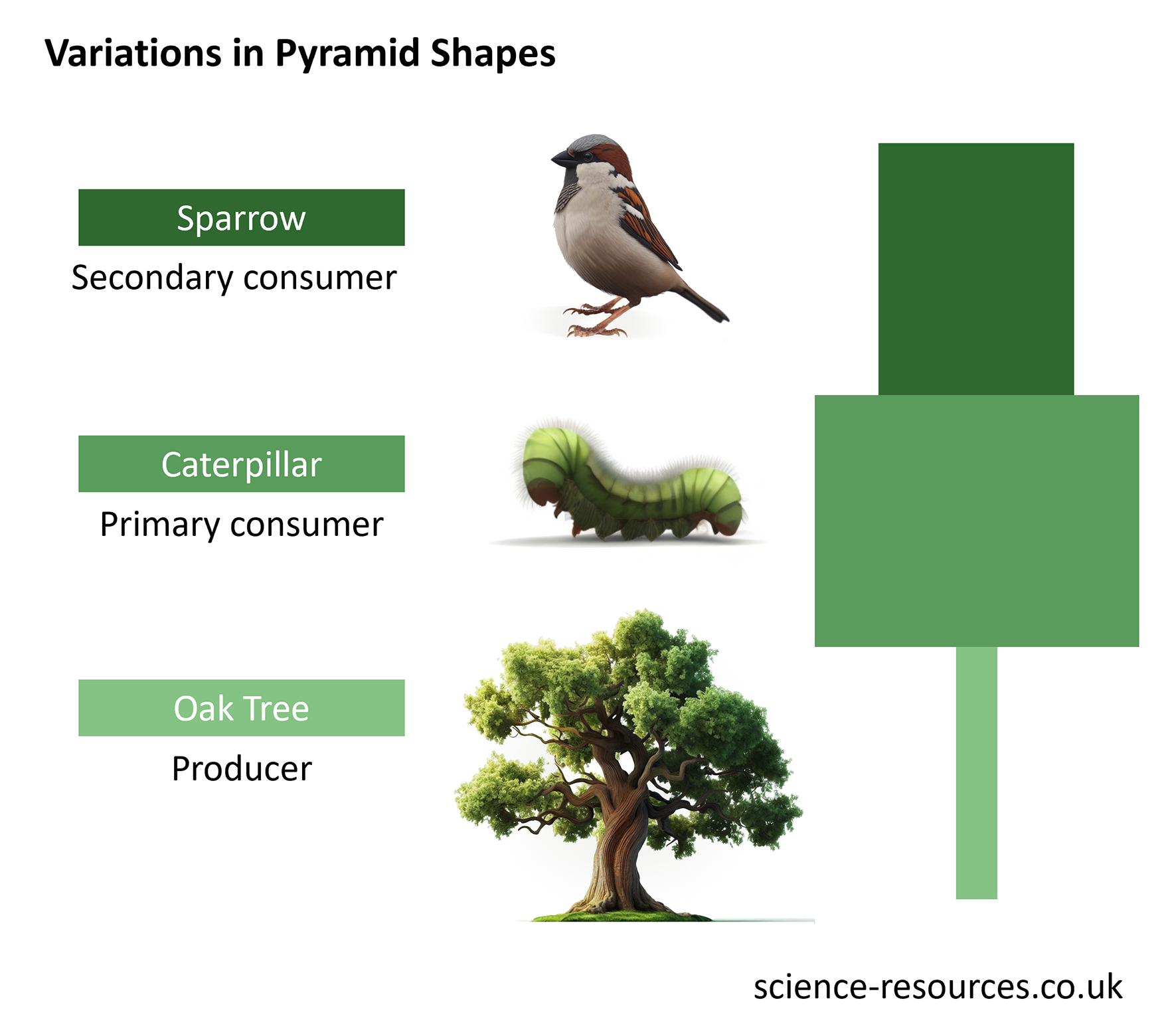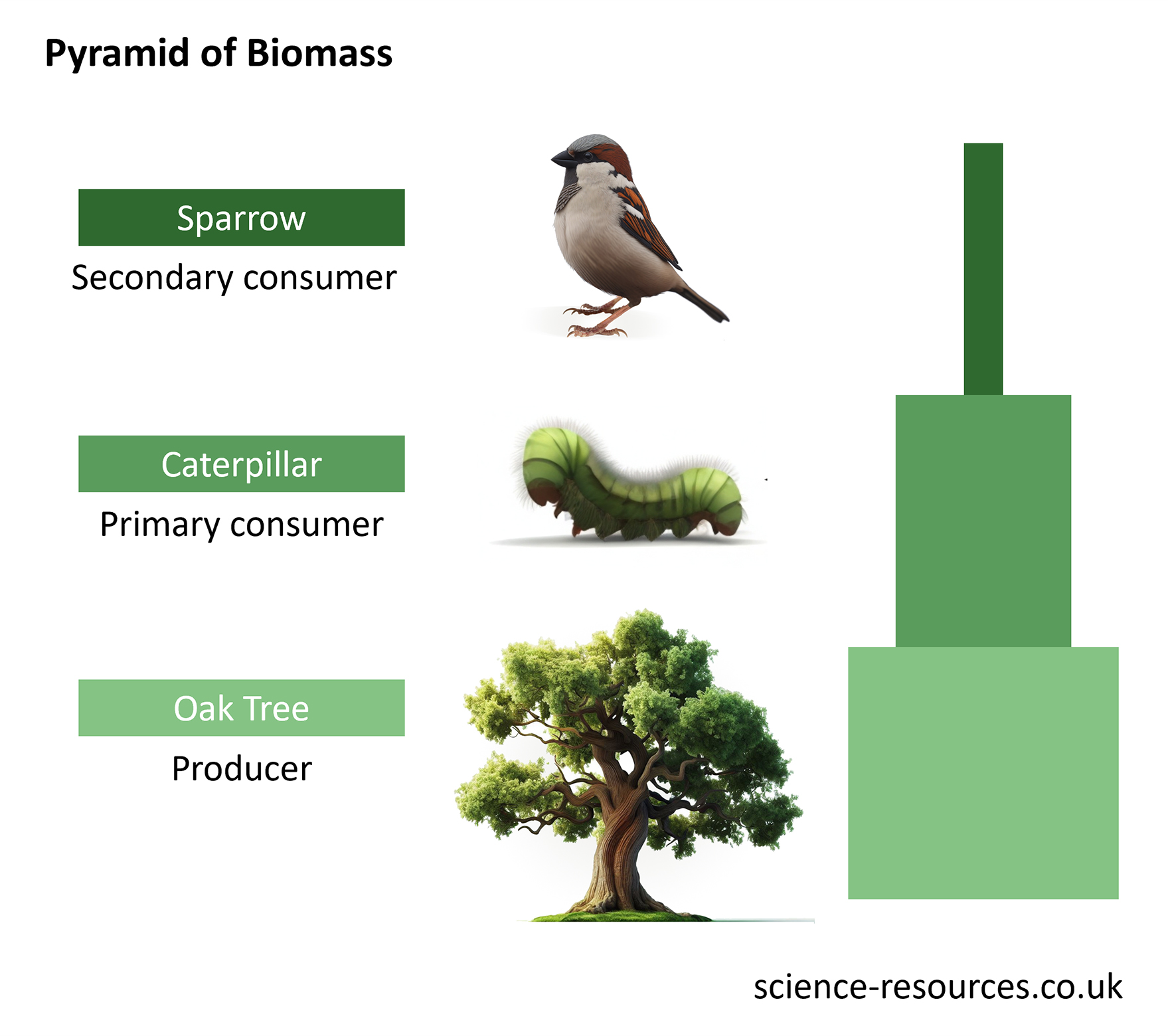Pyramids of numbers
Food chains Pyramids of number A food chain with its pyramid of number. A pyramid of numbers is a diagram that shows how many living things are in each stage of a food chain. The diagram has bars of different widths and the same height. The width of a bar shows how many organisms are in that stage, and the height is the same for all bars. A bigger bar means more organisms in that stage.
A food chain is a way of showing the different kinds of living things in a habitat and how they feed on each other. For example:
Leaf → Caterpillar → Vole → Owl
Food chains and webs are useful for understanding the feeding relationships in an ecosystem. However, pyramids of numbers provide even more information. They are a type of bar chart that shows the population of organisms at each stage in a food chain.
For example, here is a pyramid of numbers diagram for the food chain: Grass → Grasshopper → Sparrow → Sparrowhawk.
The diagram starts with the producer, which is the plant that makes its own food. The producer is at the bottom of the pyramid. For example, the producer can be grass, and the bar for grass is quite big, because a lot of grass is needed to feed the grasshoppers.
The bar for the grasshoppers is smaller than the bar for the grass, because there are fewer grasshoppers than grass. The grasshoppers are the primary consumers, which are the animals that eat plants. The primary consumers are above the producer in the pyramid.
The bar for the sparrows is smaller than the bar for the grasshoppers, because there are fewer sparrows than grasshoppers. The sparrows are the secondary consumers, which are the animals that eat other animals. The secondary consumers are at the top of the pyramid.
The bar for the sparrowhawk is smaller than the bar for the sparrows, because there are fewer sparrowhawks than sparrows. The sparrowhawks are the tertiary consumers. The tertiary consumers are at the top of the pyramid.
The pyramid of numbers looks like an energy pyramid, with fewer living things as you go up the food chain. This is because some energy is lost at each stage.
Variations in Pyramid Shapes Variations in Pyramid Shapes Pyramids of biomass Biomass is the living or dead material of living things. For example, people, animals and plants are biomass. A pyramid of biomass shows the mass - in grams or kilograms - of the living things in each stage of a food chain. The bar for the oak tree is large because it has a large biomass. Note: Unlike pyramids of number, pyramids of biomass are always pyramid-shaped!
The shape of the pyramid can be different depending on how many organisms there are in each stage. Sometimes, the pyramid does not look like a pyramid at all.
For example, look at the pyramid of numbers for the food chain: Oak tree → Caterpillar → Sparrow.
Note: The oak tree is very large so can support lots of organisms, but it’s only one organism and so only has a small bar.
The oak tree is the producer, which makes its own food. The producer is at the bottom of the pyramid. But the oak tree block is not very wide, even though it is the producer. This is because the oak tree is eaten by many caterpillars.
The caterpillars are the primary consumers, which eat plants. The primary consumers are above the producer in the pyramid. The caterpillar block is very wide, because there are many caterpillars in this stage.
The sparrows are the secondary consumers, which eat other animals. The secondary consumers are at the top of the pyramid. The sparrow block is not very wide, because there are not many sparrows in this stage. This means that the sparrows need a lot of caterpillars to feed on.
Food chains do not tell us how many living things are in each stage. To show this, we can use pyramids of number. But pyramids of number are not always shaped like pyramids. Sometimes, there are big living things at the bottom and small ones at the top.
We can change the pyramids of number into pyramids of biomass. Then they look like this:
Summary: